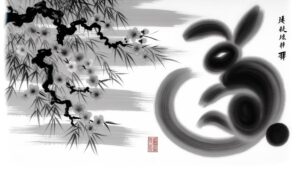What Is the Chinese Symbol for the Letter R?
In Mandarin Chinese, the letter 'R' is represented by the retroflex approximant sound, transcribed in Pinyin as 'r' and phonetically noted as [ɻ]. This sound is distinct from the English 'R' and appears in Mandarin syllables such as 'rén' (人, meaning 'person') and 'rì' (日, meaning 'day').
The symbol 'r' in Pinyin indicates this specific articulation. Understanding this sound involves nuances like tongue position and vocal cord engagement which differ from English pronunciation.
To understand the cultural and linguistic context thoroughly, exploring more about Mandarin's phonetic and tonal complexities can be quite enlightening.
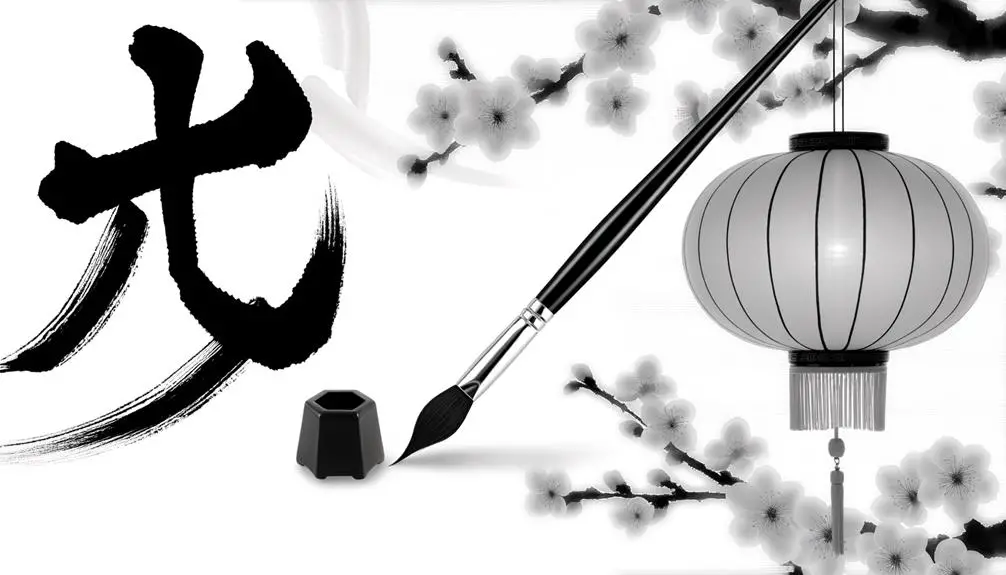
Key Takeaways
- Mandarin Chinese represents the 'R' sound with the retroflex approximant 'r', denoted in IPA as [ɻ].
- Characters like '人' (rén) and '日' (rì) contain the 'R' sound in Mandarin.
- The 'R' sound in Mandarin differs significantly from the English 'R' in articulation.
- Pinyin uses the letter 'r' to represent the retroflex approximant sound in Mandarin.
- Regional dialects in China may vary in their pronunciation of the 'R' sound.
Phonetic Representation of 'R'

In Mandarin Chinese, the phonetic representation of the English letter 'R' is primarily rendered through the initial consonant sound 'r' (拼音: 'r'), which is distinctively pronounced with a retroflex approximant. This sound requires the tongue to be curled back towards the roof of the mouth, creating a unique resonance unfamiliar to many non-native speakers.
Phonetically, this retroflex approximant is denoted in the International Phonetic Alphabet (IPA) as [ɻ]. In Mandarin, this sound appears in syllables such as 'rén' (人, meaning person) and 'rì' (日, meaning day).
It's important to understand that the Mandarin 'r' differs significantly from its English counterpart, both in articulation and acoustic properties, reflecting the intricate phonological structure of the Chinese language.
Chinese Language Basics
Mandarin Chinese, characterized by its tonal nature and logographic script, presents a rich tapestry of linguistic and cultural complexity.
The language employs four primary tones, each altering the meaning of a syllable, thereby demanding precise pronunciation.
Logograms, known as Hanzi, are integral, with each character representing a morpheme. This system contrasts starkly with alphabetic scripts, requiring extensive memorization and understanding of radical components and stroke order.
Additionally, Mandarin's syntactic structure is subject-verb-object (SVO), and it lacks inflectional morphology, relying instead on word order and particles to convey grammatical relationships.
The intricate interplay of phonetics, orthography, and grammar underpins the linguistic richness that defines Mandarin Chinese, offering profound insights into Chinese culture and communication.
Romanization Systems
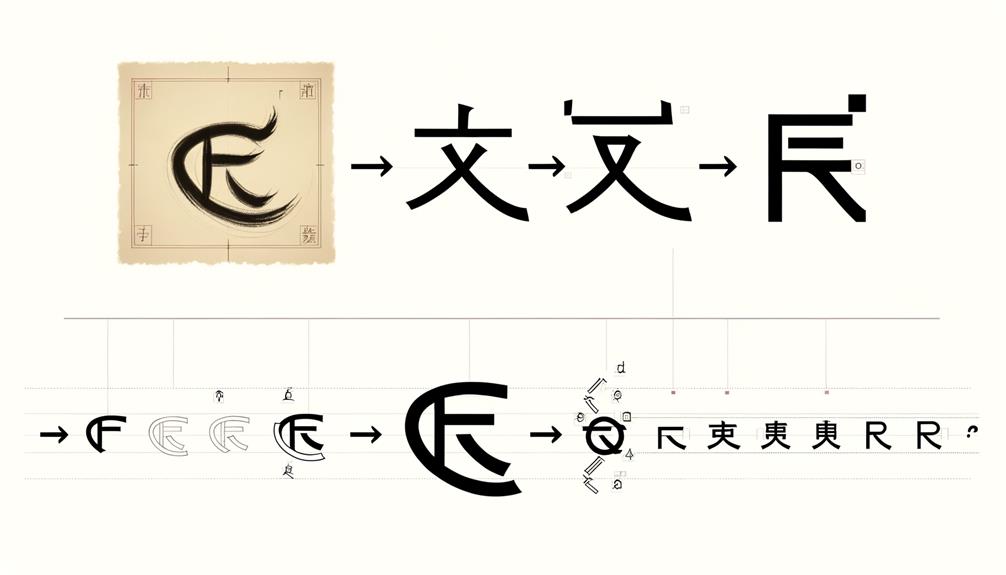
Romanization systems such as Pinyin and Wade-Giles are essential for transcribing Chinese characters into the Latin alphabet, facilitating pronunciation and learning for non-native speakers.
The Pinyin system, established in the 1950s, is the official romanization method in China and widely adopted internationally.
Conversely, the Wade-Giles system, developed in the 19th century, remains influential in academic and historical contexts despite its declining usage.
Pinyin Transliteration Method
Frequently employed in the modern study of Chinese linguistics, the Pinyin transliteration method provides a standardized system for converting Chinese characters into the Roman alphabet. Developed in the 1950s and officially adopted by the People's Republic of China in 1958, Pinyin serves as the primary tool for teaching Mandarin pronunciation and facilitating international communication.
It employs diacritical marks to denote tonal variations, which are critical in distinguishing meanings in Mandarin. For instance, the letter 'r' in Pinyin corresponds to the Chinese consonant sound '日' (rì), showcasing a retroflex approximant.
This system not only aids in language learning but also standardizes the Romanization of Chinese place names and personal names, thereby fostering a consistent linguistic framework across various disciplines.
Wade-Giles System Basics
Developed in the mid-19th century, the Wade-Giles system represents an early and influential attempt to Romanize Chinese characters, offering a phonetic transcription that predates the modern Pinyin system. This system was devised by Sir Thomas Wade and later refined by Herbert Giles.
The Wade-Giles system is notable for its use of diacritical marks and apostrophes to denote tones and aspirated consonants.
Key features of the Wade-Giles system include:
- Apostrophes: Used to indicate aspirated consonants, distinguishing between sounds such as 'p' and 'p''.
- Diacritics: Employed to mark tonal variations in Mandarin, essential for accurate pronunciation.
- Syllabic Structure: Reflects the phonetic components of Chinese characters, providing a guide for non-native speakers.
Understanding these elements is essential for comprehending early Romanization efforts.
Pinyin and 'R' Sound
The Pinyin system is an official romanization for Standard Mandarin. It provides an essential guide to Mandarin pronunciation, including the nuanced 'R' sound. This sound, represented by the initial 'r' in Pinyin, is particularly challenging for non-native speakers due to its unique retroflex articulation.
Common misconceptions often arise from attempts to equate it directly with the English 'r', overlooking its distinctive phonetic characteristics within Mandarin.
Pinyin Pronunciation Guide
Mastering the pronunciation of the 'R' sound in Pinyin, an essential component of the Mandarin Romanization system, requires an understanding of its unique phonetic characteristics and its cultural significance.
The 'R' sound in Mandarin, unlike its English counterpart, is a retroflex approximant produced with the tongue curled back towards the roof of the mouth.
To accurately produce this sound, one should focus on:
- Tongue Position: Confirm the tongue is retracted and slightly curled back.
- Vocal Cord Vibration: Engage the vocal cords to generate a voiced sound.
- Mouth Shape: Maintain a rounded lip posture to facilitate the correct resonance.
Proficiency in these aspects not only enhances pronunciation but also provides deeper insights into the linguistic intricacies of Mandarin.
Mandarin 'R' Nuances
Understanding the nuances of the Mandarin 'R' sound in Pinyin requires an examination of its phonetic subtleties and its integration into various linguistic contexts.
The Mandarin 'R' (represented as 'r' in Pinyin) is articulated by placing the tongue near the alveolar ridge, producing a sound that is a combination of an English 'r' and 'zh'. This sound, voiced and fricative, is distinctly different from the retroflex 'r' in English, leading to its unique position in Mandarin phonetics.
Moreover, the 'r' sound can function as both an initial and medial consonant, evident in words like 'rén' (人, meaning person) and 'èr' (二, meaning two).
Mastery of this sound is essential for accurate pronunciation and effective communication in Mandarin.
Common Misconceptions Explained
A prevalent misconception about the Pinyin 'r' sound is that it directly corresponds to the English 'r', overlooking its unique phonetic characteristics and cultural significance in Mandarin. In Mandarin, the 'r' sound is a retroflex approximant, articulated by curling the tongue towards the roof of the mouth, differing markedly from its English counterpart. Understanding this distinct pronunciation is crucial for accurate communication and cultural appreciation.
Key distinctions include:
- Phonetic Production: The Mandarin 'r' involves retroflexion, unlike the English 'r'.
- Cultural Context: Pronouncing 'r' correctly in Mandarin words like 'rén' (人, person) signifies respect for linguistic nuances.
- Learning Accuracy: Mispronunciation can lead to misunderstandings, emphasizing the importance of mastering the correct sound.
Common 'R' Characters

The most frequently encountered Chinese characters containing the phonetic element 'R' include 热 (rè), which means 'hot', and 人 (rén), meaning 'person'. These characters are foundational in daily communication.
| Character | Pinyin | Meaning |
|---|---|---|
| 热 | rè | Hot |
| 人 | rén | Person |
| 日 | rì | Sun/Day |
| 如 | rú | As/Like |
| 入 | rù | Enter |
Each character holds significant cultural and linguistic relevance. For instance, 人 (rén) is essential in forming compound words like 人人 (rénrén, meaning 'everyone'). Understanding these characters enhances comprehension of Mandarin Chinese, illustrating the phonetic element 'R' in varied contexts.
Pronunciation Nuances
Understanding the pronunciation nuances of the Chinese 'R' involves addressing significant phonetic challenges, particularly for non-native speakers.
Regional variations, such as those between Northern and Southern dialects, further complicate the accurate articulation of this sound.
Additionally, the tone and contextual sensitivity in Mandarin necessitate a precise understanding of how 'R' can alter meaning and sentence structure.
Phonetic Challenges Explained
Exploring the phonetic challenges of translating the letter 'R' into Mandarin Chinese requires a deep understanding of the language's tonal and articulatory nuances.
Unlike English, Mandarin Chinese lacks a direct equivalent to the English 'R' sound. The Mandarin phoneme 'r' (pinyin: [ʐ]) is retroflex and produced by curling the tongue back towards the palate.
Key challenges include:
- Tonal Variation: Mandarin employs four main tones, and the tone applied to the 'r' sound considerably alters its meaning and pronunciation.
- Retroflex Articulation: The retroflex nature of the Mandarin 'r' differs from the alveolar or postalveolar articulation found in English.
- Phonetic Context: The 'r' sound in Mandarin occurs in specific phonetic environments, often requiring a preceding vowel to be pronounced correctly.
Regional Pronunciation Variations
Regional pronunciation variations in Mandarin Chinese introduce significant nuances, particularly when articulating the 'r' sound across different dialects. In Standard Mandarin, the 'r' sound is typically retroflex, produced with the tongue curled back towards the roof of the mouth.
However, in Southern dialects, such as Cantonese, the 'r' sound may be less pronounced or substituted with an 'l' sound, reflecting phonetic influences from regional languages. Northern dialects, including those spoken in Beijing, exhibit a stronger, more pronounced 'r' sound, often extending into a rhotacized ending known as 'erhua.'
These variations not only enrich the linguistic tapestry of Chinese but also present challenges in standardized communication, requiring careful attention from language learners and speakers.
Tone and Context Sensitivity
While regional pronunciation variations greatly affect the articulation of the 'r' sound, the subtleties of tone and context sensitivity in Mandarin further complicate accurate pronunciation and comprehension.
Mandarin is a tonal language, meaning that the pitch or intonation used when speaking a word can drastically change its meaning. The 'r' sound in Mandarin, often represented by the pinyin 'r', is subject to these tonal shifts, substantially impacting its interpretation. Understanding this requires recognizing:
- Four Tones: Each tone alters the semantic meaning of words even if spelled identically in pinyin.
- Contextual Cues: Context in spoken and written language aids in discerning the intended meaning.
- Phonetic Nuances: The 'r' sound may merge with adjacent sounds, further complicating pronunciation.
Thus, mastering tone and context is essential.
Regional Variations
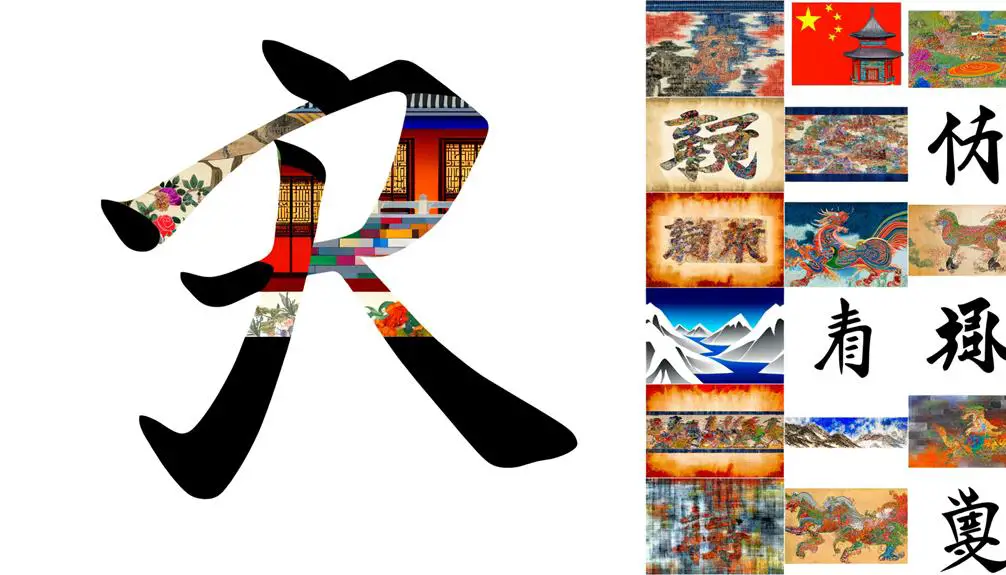
Given China's vast linguistic diversity, regional variations greatly influence the representation and interpretation of symbols, including the character associated with the letter 'R'.
Mandarin, the predominant dialect, often uses the pinyin 'r' (如, rén) to approximate the sound.
In contrast, Cantonese, spoken in Hong Kong and Guangdong, might employ different phonetic approximations (e.g., 'y' sound in '人', yàhn).
Additionally, the Min dialects, prevalent in Fujian and Taiwan, exhibit unique phonological systems that further diverge from standard Mandarin.
These regional discrepancies underscore the complex interplay between phonetic symbols and local linguistic practices.
Understanding these variations not only enriches one's comprehension of Chinese phonetics but also offers valuable insights into the cultural and linguistic tapestry of China.
Learning Tips
Mastering the nuances of Chinese phonetics requires a strategic approach tailored to the specific dialect and its unique phonological characteristics. For learners focusing on the Chinese symbol for the letter 'R,' here are essential tips:
- Phonetic Practice: Regularly engage in listening and pronunciation exercises to distinguish subtle differences between similar sounds, especially given the tonal nature of Chinese.
- Native Speaker Interaction: Engage with native speakers to gain real-world pronunciation feedback and to understand contextual usage, which is pivotal for mastering colloquial nuances.
- Multimedia Resources: Utilize multimedia tools such as language apps, audio recordings, and videos to reinforce auditory recognition and pronunciation skills.
Cultural Context

Understanding the cultural context of the Chinese symbol for the letter 'R' involves exploring its historical evolution, regional variations, and its significance in modern communication.
The letter 'R' in Mandarin is represented by the pinyin 'r' and pronounced similarly to the English 'r.' Historically, the phonetic system has undergone several reforms, most notably in the 20th century with the introduction of pinyin.
Regional accents and dialects influence the pronunciation and usage of 'R,' leading to variations across different Chinese-speaking communities.
In modern communication, the symbol plays an essential role in transliteration, digital text input, and language learning. Its integration into technology and education underscores its importance in facilitating cross-cultural exchange and understanding.
Misconceptions
One common misconception is that the Chinese language has a direct equivalent symbol for the English letter 'R,' whereas in reality, it is represented phonetically through the pinyin system. Chinese characters embody whole syllables or morphemes rather than single phonetic elements as in the Latin alphabet.
As a result, the pinyin system transliterates the sound 'R' using the Roman alphabet to aid in pronunciation.
Key points to understand:
- Phonetic Representation: Pinyin is used to phonetically represent sounds, with 'R' being one of them.
- No Direct Symbol: Chinese characters do not correspond one-to-one with Latin alphabet letters.
- Cultural Differences: The Chinese writing system focuses on semantic meaning rather than phonetic representation alone.
Understanding these nuances is important in grasping the linguistic intricacies.
Practical Applications
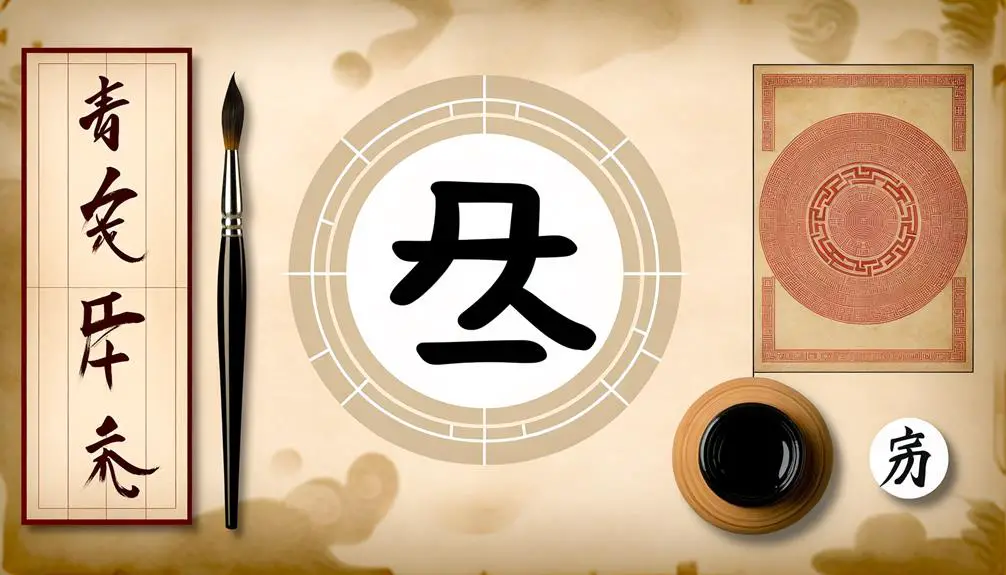
The pinyin system's practical applications extend to educational tools, linguistics research, and digital communication, facilitating accurate pronunciation and cross-cultural understanding.
In educational contexts, pinyin aids language learners in mastering Mandarin phonetics by providing a Romanized representation of sounds, including the challenging 'r' sound.
Linguists utilize pinyin for phonological analysis and comparative studies, enhancing the understanding of Mandarin's phonetic structure.
In digital communication, pinyin is essential for input methods on electronic devices, enabling efficient and accurate text entry.
Additionally, pinyin's standardized approach guarantees consistency in transliteration, critical for academic publications and global exchanges.
These applications underscore pinyin's integral role in bridging linguistic gaps and promoting effective communication between Chinese and non-Chinese speakers.
Conclusion
To wrap up, grasping the representation of the letter 'R' within the Chinese language necessitates a solid understanding of phonetic systems like Pinyin, which modifies the sound using particular characters such as '日' (rì).
For instance, a Chinese language student may face difficulties initially in pronouncing 'rén' (人, signifying 'person'), but with dedicated practice on the Pinyin system and awareness of the cultural subtleties, proficiency can be attained.
This underscores the significance of incorporating linguistic and cultural comprehension in mastering Chinese phonetics.






